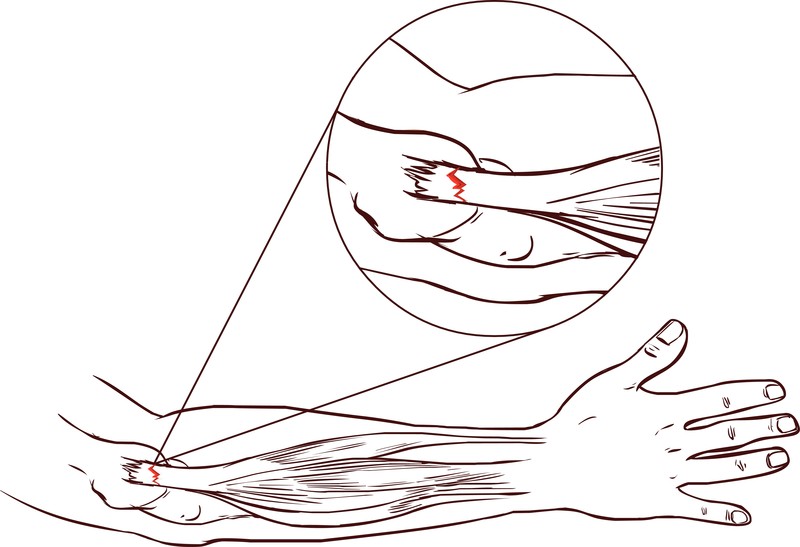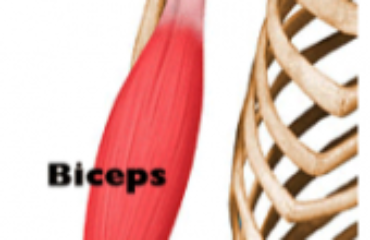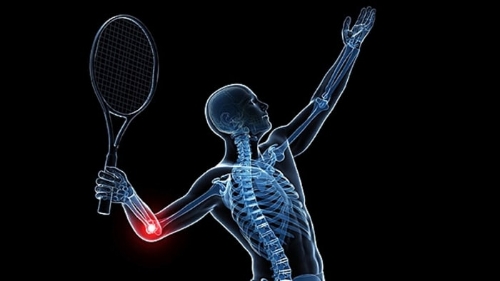Golfer’s elbow is the colloquial term for medial epicondylitis which is inflammation of the tendon that attaches the muscles of the forearm to the bony aspect of the inner area of the elbow (medial epicondyle). The condition is similar to tennis elbow but the tendon that is inflamed in the latter is the one that attaches the muscles of the forearm to the outer aspect of the elbow (lateral epicondyle).
Medial epicondylitis is called golfer’s elbow because the swinging action of golfers is thought to result in this inflammation of the affected tendon, but is not limited to only individuals who take part in golf.
 Signs and symptoms
Signs and symptoms
- Swelling, pain, and tenderness on the inner aspect of the elbow.
- Pain may extend along the inner part of the forearm and may even refer all the way down to the wrist and hand.
- Stiffness of the elbow which may result in difficulty to bend the arm or even make a fist, which may also be painful to attempt.
- There may be weakness in the wrists and/or hands.
- Numbness or tingling sensation experienced in the fingers, especially the fourth and fifth digits (ring and pinky fingers).
- Worsening pain when performing activities such as squeezing or throwing a ball, lifting weights, turning a doorknob, shaking hands, flexing the wrist, or swinging a golf club or tennis racket.
Causes
Extended or repeated activities leading to increased stress on the tendon attaching to the medial epicondyle causes inflammation to this tissue. Activities that may cause this problem include:
- Swinging or gripping clubs or rackets using heavy or small equipment, incorrect techniques or being too forceful.
- Inadequate throwing or pulling-back techniques used in sports such as baseball, cricket, archery, or javelin.
- Lifting weights using the incorrect techniques such as when performing biceps curls.
Diagnosis
Golfer’s elbow is usually diagnosed based on the history given by the patient and the clinical findings made by the examining doctor.
X-rays may be performed to rule out any other causes of pain to the inner elbow such as fractures, but an MRI of the elbow may be performed if the clinical suspicion of other issues warrants it or may be done to evaluate the extent of the pathology.
Management
The initial management protocols for most tendon pathologies include:
- Resting the affected joint.
- An ice pack or cold compress applied to the affected area every couple of hours for 10 to 15 minutes at a time to help reduce the swelling and pain.
- Using over-the-counter pain medications such as acetaminophen, or anti-inflammatories such as ibuprofen, diclofenac, or naproxen.
Further management of golfer’s elbow may include:
- Wearing a counter-force elbow brace to reduce strain on the tendon and muscles of the forearm.
- Physical therapy to help with stretching and strengthening exercises.
- Steroid injections administered around the affected area for short-term relief.
- Platelet-rich plasma (PRP) therapy may be attempted where the affected individual’s own blood is drawn, spun down, and the platelet-rich plasma is then prepared and injected into the tender area. Studies show that this is a relatively safe and effective form of therapy for this condition.1
- Surgery may be performed if the patient doesn’t respond to the conservative therapies after six to 12 months of treatment. A minimally invasive procedure may be performed where slender instruments are inserted into small incisions made on the skin to remove scar tissue on the injured tendon.



